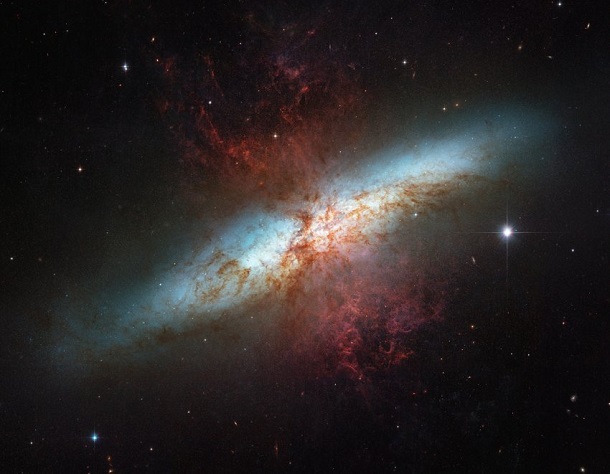Researchers have discovered a cosmic mystery: M82 shines at 2000 trillion gigawatts – much too strong for a black hole. And they pulsate like a cosmic lighthouse, but too fast for a pulsar. What’s going on in the Cigar Galaxy?
Astronomers have discovered a Röntgenpulsar which shines around a hundred times brighter than after the previous physical theory possible. The object in the galaxy M82 comes at a light intensity of 2000 considerable trillion gigawatts and challenges current models of cosmic X-ray sources in question, reports a team led by Matteo Bachetti of the University of Toulouse in the British science journal “Nature”.
The scientists Bachetti had called ultra-bright X-ray sources studied, the nature of which is not clearly understood. For most, it is assumed that it is small to medium sized black holes with the tens to hundreds of times the mass of the sun, which in incorporating matter from the environment. This matter remains lit brightly in X-rays.
In the twelve million light-years distant galaxy M82 came Bachetti and his colleagues are now, however, on an ultra-bright X-ray source that pulsates regularly at intervals of about 1.4 seconds. This is in black holes, according to previous idea impossible – but typical indication of a pulsar.
Röntgenpulsar: Corpses burned-suns
Pulsars are among the neutron stars, the corpses burned out suns. Post like a cosmic lighthouse a collimated beam into space, as they rotate. If the earth exactly in the direction of this beam, astronomers see the star regularly lit – depending on the speed of its own rotation.
Unlike black holes, neutron stars can not be arbitrarily high mass. They typically have 1.4 times the sun’s mass. The mass determined but according to the previous idea, the maximum luminosity – and now the measured luminosity is about a hundred times higher than the theoretical limit. The agency the previous model concepts questioned how such objects incorporative matter, write Bachetti and his colleagues.
[adrotate group=”12″]

